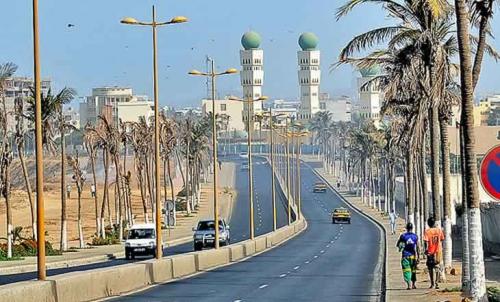
Humanitarian and Development
Place
Saint-Louis, Senegal
Sponsor
Guillaume Briffeuil
Grant
€60,000 over two years to the Selection Committee at 2013/10/15
Project leader
Agence de Développement Communale
"The cities of Lille and Saint-Louis, and Agence de Développement Communal, have invested considerably in building this project. The living conditions of the population of the neighborhoods concerned will be therefore considerably improved, with a key asset: positive fallout from social integration, economic prosperity and employment."
Guillaume Briffeuil
Created in 2000, Agence de Développement Communal (ADC) is an associative support structure for the town of Saint-Louis. A place of exchanges, encounters and consultation between elected officials, technicians and civil society, designed to ensure the coherence of activities in the communal space. It aims to support and reinforce communal contractorship and then guarantee that the commune becomes the privileged hub for the organization and construction of the development of Saint-Louis. ADC also helps structure and promote the local economy, intensifies and consolidates the actions initiated to reinforce community development dynamics. It is also the privileged operator for decentralized cooperation projects conducted under the twinning arrangement with the City of Lille.
Long lasting cooperation
This project is a component of the continued support of the City of Lille for the commune of Saint-Louis in the area of public lighting. Since 2006, public lighting contracts in Lille contain a clause for the implementation of a project serving to improve the public lighting in Saint-Louis, which has led to the gift of 350 lighting fixtures, support in drawing up a "Lighting" development plan, which began with metering activities of the system and the mapping of the public lighting network. The geolocalization of the light points is underway and supplies basic contractual data (mast height, mast type, operating status, wattage, etc.).
The issue today is to supply lighting fixtures for a road loop that comprises three of the city's main arteries:avenues General de Gaulle, Moustaph Malick Gaye and Macodou Ndiaye, nearly two kilometers and 66 light points. Located in the Sor District, the town's most outspread neighborhood, the action zone selected includes the town's main market and impacts a densely populated area. The present lighting system is mediocre, spotty and unattractive. Besides, since the lighting equipment is of poor quality, power consumption is high and the bills are steep.
The framework of the coming public lighting contract also provides for diagnosis, training and equipment for technicians. All these actions demand a commitment over time:the project is slated to run over five years. The City of Lille is capable of providing supervision thanks to the full-time presence of a technical correspondent.
Better light with less power consumption
The improvements engendered by the project are qualitative as well as quantitative. On avenue du General de Gaulle, most of the light of the network was damaged during roadway rehabilitation. Hence, there is a crying need for lighting on this highly travelled road, which includes the large Sor market. On avenue Moustaph Malick Gaye, the prolongation of avenue du General de Gaulle for business activities, a number of masts have been recovered to connect the lights, but the lighting remains insufficient. And avenue Macodou Ndiaye has a more recent installation, but the quality of masts and the light output are not sufficient for quality lighting.
The lights of these roads are equipped today with polluting and inefficient mercury vapor lamps, which will be prohibited in the European Union from 2015. A photometric study helped to determine the number of lights to be installed and the wattage of the lamps required for optimal lighting: one mast every 30 meters and 100 watt lamps (efficient CDO-TT + type metal halide lamps). The lamps selected for the project are metal iodide lamps. They provide a white, warm light, offer quality lighting for half the power consumed by the "historic" installation of Saint-Louis.
High quality power-saving lighting in Saint-Louis
Alongside the City of Lille and the commune of Saint-Louis, the Foundation is happy to join the project, which improves the daily life of the Senegalese while saving energy.

